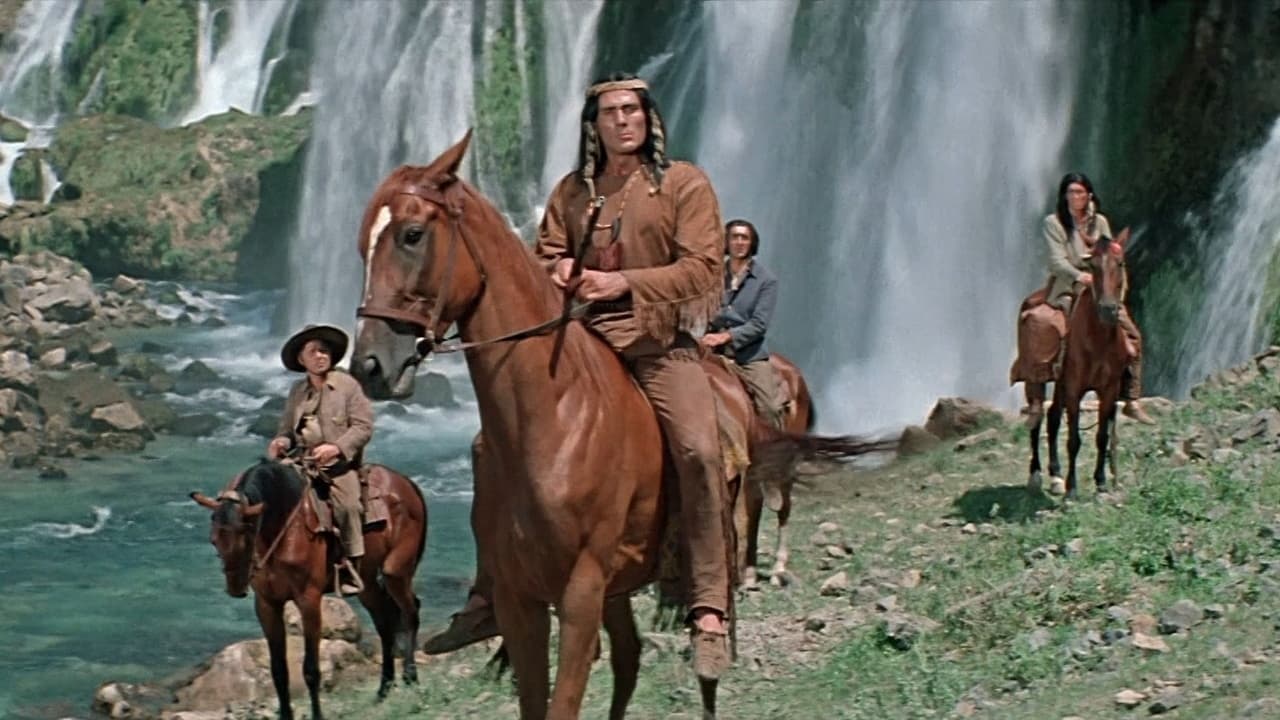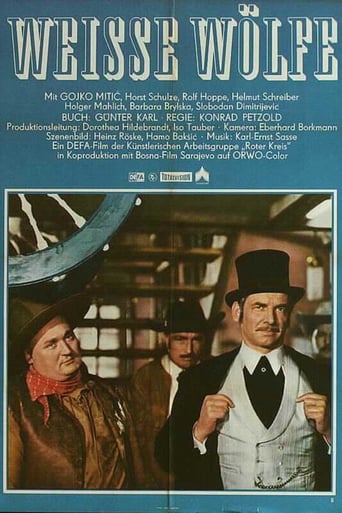

ridiculous rating
... View MoreLet's be realistic.
... View MoreJust so...so bad
... View MoreClever and entertaining enough to recommend even to members of the 1%
... View More"Weisse Wölfe" or "White Wolves" is an East German film from 1969, so this colour film will s1oon have its 50th anniversary. It is another of the Sauerkraut Westerns, the GDR's approach to the popular West German Winnetou movies and just like with all the others, the title character is played once again by Gojko Mitic. Two directors and three writers worked on this film, which made it especially disappointing for me that it turned out so forgettable. I guess it is another example of too many cooks spoiling the broth. You cannot really blame Mitic. He is certainly among the better actors from the cast and I also believe he is better than Brice, even if that's nothing special. However, the writing here is so mediocre and not memorable at all that nothing stays in the mind except the solid nature photography. But you can also watch a documentary if you want to see that. The film runs for 100 minutes approximately and I lost quickly interest in the plot and story. The consequence was that this movie dragged a lot. It's only worth seeing for the very biggest western film fans. Everybody else should better skip it.
... View More"Weisse Wölfe" is the sequel to "Spur des Falken". The wife of Chief Weitspähender Falke (Gojko Mitic) is murdered by bandits. His search for revenge leads him to Tanglewood, a town which is under control of the bandits. Great performance again by Rolf Hoppe as the vicious Bashan, by the way! Sheriff Patterson and his wife hope to improve the situation. When the money of Sam Blake (convincing actor: Helmut Schreiber) is stolen by the bandits, it seems a few allies might unite, but they don't seem to have a real chance.The dramatic music of the movie, often led by powerful brass instruments, does well to enhance its effect. The East German "Weisse Wölfe" tells its story in a much darker mood than contemporary Karl May films of the West German cinema, showing at the beginning how the natives are forced to go into reservations and struggle for survival, an attempt which seems doomed. It is difficult to say though how much it might be influenced by movies like John Ford's "Cheyenne Autumn".
... View More